homeschooling q and a, part two.
Good afternoon!
This is the second of a three-part series answering homeschooling questions. Part one talked about Classical Conversations and homeschool groups.
Today I’ll focus on curriculum and planning. Friday, I’ll speak to homeschooling with littles and homeschooling multiple grades.
Friends, I know all of this is super information overload. Truly, it’s easier for me to write in all here in one week, but do not try to read it all at once! The minute it becomes a burden or overwhelming, just stop! You can always file it away and come back to it as you have time. The last thing I want is to discourage you or make you call into question what you’re doing.
Sound good?
Q. So you use CC and Sonlight, how do you choose the remainder of your curriculum? What textbooks do you use?
A. CC and Sonlight give us the overall structure for our year’s material and most of our books, but you’re right, there are some gaps to fill. I like the fact that parents have the freedom to choose their own math and language arts curriculum. There are so many good choices available, and everyone has an opinion, so as you’re getting started, I highly recommend some sort of a guide.
Maybe that’s asking a few homeschooling parents you know what they use and why. For me it was incredibly helpful to be apart of our accountability organization, SCAIHS, for two years. We had our own homeschool guidance counselor, and she sat down with me each summer, asked lots of questions about my kids and their learning style, and gave me some ideas for curriculum.
To me that’s the best-case scenario, because she’d been a first grade teacher for years and years, had worked with homeschoolers for years, and knew which options were weak and which were tried and true.
I decided not to continue with SCAIHS this year because I felt that a lot of the services overlap with Classical Conversations, and like I mentioned, the older the kids get, the more CC takes over our curriculum. In SC, homeschoolers are legally required to be registered with a homeschool organization, so we’re currently using a group called TSCHAA. However, if we ever left CC, I would immediately go back to SCAIHS.
(Whew, that is way too many acronyms for one paragraph)
So yes, if at all possible, please have someone help you with curriculum ideas, but I always hate to tell people the exact skills textbooks we use because in the end, this is an area that is so subjective. There are many solid options out there. Don’t let yourself become paralyzed by a desire to make the “perfect” choice. There is no perfect choice.
When you’re starting out, just choose something, stick with it for a year, and evaluate its strengths and weaknesses, whether it worked for your child’s learning style or not, whether it made you want to bang your head against the wall as a teacher, or whether it suited you both. Every year you will know your child and your household dynamic a little better, you know the people and websites you trust, and can very slowly start to make these decisions for yourself.
A word to the wise:
I’ve learned that if it’s not broke, don’t fix it. It is so tempting to try a new phonics workbook or math curriculum every year as you hear what other people love. Our guidance counselor said, “It’s okay to switch curriculum when you need to, Julie, but just remember, every time you do, there will be gaps in your child’s knowledge. Try to save switches for the times you really need them.”
That makes so much sense to me!
And it helped weed out my motivations: sometimes one of my kids was really struggling with something and needed that switch, but usually they were just bored or I was bored and found something that seemed more fun or attractive.
Guys, a lot of school is not fun. Especially these skills they’re learning. There is no magic curriculum that will take away the need for hard, daily work: reciting multiplication tables, learning to form letters correctly, reading.
Q. Do you use the same curriculum across the board for your kids, or tailor it to each child? Please tell me what books you use!
A. The only way to homeschool several kids is to keep things as simple as possible. So it works best for me to just plan, more or less, to use the same curriculum for all of my kids, and only change if I absolutely need to. Thus far, we’ve made it work without switches thanks to what we’ve learned from our wonderful guinea pig, also known as the oldest kid: Judah.
Here’s what we use:
Math: Saxon (starting with Saxon 1: do not buy that kindergarten book! It’s a complete waste of money)
Reading: An Ordinary Parent’s Guide to Teaching Reading (we use about half of this book and then transition to Pathway Readers)
Phonics: Explode the Code workbooks (and we use their preschool workbooks, but I don’t purchase the teacher’s guide)
Readers: Pathway readers: this is what my kids use to practice reading aloud to me (just the books, not the workbooks)
Grammar: First Language Lessons
Spelling: ACSI (we start spelling in the second grade, I don’t purchase the teacher’s guide)
Handwriting: Zaner-Bloser handwriting (print and cursive)
Copywork: Prescripts cursive copywork (made by Classical Conversations, I switch from Zaner-Bloser to this once the student is fluent in cursive)
We reuse curriculum as much as possible and just cannot afford to buy two separate Math or grammar books.
Because of this, if someone is struggling, my first plan of attack is always to tweak what we’re already doing. Should lessons be shorter? Are they bored and need to skip ahead? Should I assign fewer Saxon worksheets than what is assigned, or should we practice our math facts in a different way sometimes?
Do I need to find a better way of explaining things? Judah dislikes grammar and sometimes just the act of pulling out one of those little Target $1 whiteboards and letting him do his lesson on it helps. Sometimes we diagram sentences from Harry Potter or The Hobbit.
Amelie struggles with Math, and we were advised to switch her to a different curriculum. But not only did I not want to spend the money, I felt like it would make my head crazy to try to follow two whole separate math systems for my kids.
So we’ve changed Saxon for her by using lots of hands-on manipulatives, colored pens, hey, even Shopkins toys, to liven up the lessons for her. Of course we won’t let her sink and fail — if we need to buy a different book we will — but even just personalizing the curriculum has helped her leaps and bounds (I also strongly suspect that now doing math with her dad instead of her mom helps).
Q. How do you plan out your year/assignments?
A. Ready for my planning system? It’s probably way less exciting than you imagine.
In South Carolina we’re required to document and keep track of days starting in first grade. I do not document kindergarten!!! (except for my sweet child’s favorite school work pages, and that is for their benefit alone). Some people ask if they should use kindergarten to get in the habit of tracking days/curriculum, and to that I say, “Heck no!” Give yourself a break. You’ll never get it again.
So all of the following applies to first grade and up:
I print out a simple, no-frills homeschool attendance form for each child and put it in my 3-ring planning binder. I sketch out known vacations/holiday breaks from school, and divide the school year into first semesters, then quarters.
So we need to complete 90 school days per semester, 45 per quarter. I make sure to circle my end-of-quarter dates, and really use that quarter chunk of time as my guide to make sure I’m staying on track: both with days of school, and with the work we need to get done. It overwhelms me to look beyond the quarter that we’re in, so I don’t. I also write lightly in pencil next to each month how many school days we need to complete to stay on track (it usually ends up being about 19).
At the beginning of the year, I sit down with all our textbooks and figure out how many pages or lessons I need to complete to finish our 180-day year. I then divide that amount up into quarters. Finally I make a handwritten chart for my students telling me how many pages/lessons we need to do that subject in a week. This chart is what I refer to as I plan out our week’s worth of lessons (and it’s now in my bullet journal!).
I’ll take a super quick tangent to say: in my house it works much better to do most subjects in small portions every single day (we have a 4-day week because of Classical Conversations). It gets my kids into the habit of their subjects, keeps them from asking, “Do I have to do spelling today?”, and keeps lessons blessedly short.
Does all of this make sense?
By doing all of that work and making a basic chart, I’m able to really streamline my weekly planning.
Q. How long does it take you to plan out each week?
With no distractions, I can easily plan out our week in an hour or so. I do it over the weekend, and try to make sure I’m distraction-free — either while the kids are watching cartoons or when they’re all outside.
Each week as I sit down to lesson plan, I first open my planning binder and fill out the school days we completed the week before. That way I have a weekly check-up on our school attendance and don’t get behind.
Next, I pull out the workbooks we will use (I keep these stowed away in a cabinet all week).
It works well for me to just tear out the appropriate worksheets in a subject for the whole week and put the kids’ work for the week in pocket folders in my drawer, where I can pull them out a day at a time.
This year we’re using clipboards for daily work, and they’re great! It really keeps Judah and Amie from getting overwhelmed with all they have to do by looking at a whole big workbook, and I like that the clipboard can easily be carried into another room to work (of course we do handwriting at the table).
One day’s worth of worksheets goes on a clipboard and in the kid’s basket on our gray homeschool shelf. Any non-worksheet books they’re using this semester go in that basket as well (grammar book, Pathway readers).
For assignment lists we use Sarah Mackenzie’s method of spiral notebooks. I turn to a blank page, write the date, and list out that day’s assignments with boxes for checking off completed work. I always include chores too, and if there’s anything special going on that day I list it so the kids have an idea of what our day looks like. Note: these spiral notebooks double up as my legal record-keeping of work we did!
Ideally I write out a week’s worth of pages at a time, but I’ll be honest and say that lately I’ve written them out before the kids get up the morning of and that’s been okay too.
Judah’s in third grade this year, and a big academic focus for me is getting him working independently. So every day he has some work he does with me and then a list of independent work. I come after him and check those things when he’s finished. If he has a question while I’m working with one of the other kids he knows to circle the problem, skip it, and move on.
This is working so well for us! You guys, it’s a game-changer to start having more independent homeschool students. But more about on that Friday!
Finally, once I’ve plotted out our workbook-y stuff, I make a plan for our Classical Conversations week, which is really my favorite part.
I check on that week’s memory work, hang the appropriate timeline cards on our wall, and find a few ways to supplement our material. So this year CC counts for all of our history and science work. I search Pinterest for very simple little projects to supplement the work, and I’m talking simple, people.
I invest in nice colored pencils for my kids (here) that they may only use for school projects or for the little guys, when supervised, and I use that to justify the fact that I do almost nothing else that’s crafty. I take that back: I always have white paper, pencils, construction paper, scissors and glue sticks accessible to them, and it’s amazing what projects they come up with!
So when I say I search Pinterest, I mean something that involves the above supplies (you can see my CC board here). But if I’m enthusiastic about it and/or print something off the Internet for them to color, they’re thrilled! Sometimes we’ll watch a little Youtube video to help explain something. I also try to buy a children’s encyclopedia of some sort every year and so usually we’ll look up the appropriate info for our CC work. Finally, like I mentioned Monday, we have read-alouds that fill in our history, science, and literature work.
This first hour and a half or so of our day is the most fun, and is probably my favorite thing about doing Classical Conversations. I love that all my kids can learn together. They all have the same memory work, just modified to each age group, and it gives them a common vocabulary and common memories as they giggle over hand-motions or songs or their tin whistle lesson.
Noah isn’t in a traditional class yet (he’ll be in 4K next year), so I don’t make him join in but he always wants to. We sing review songs, locate countries on our dry-erase maps, draw continents, do our little projects, and then all the kids choose to draw or play with special bins of educational toys while I read aloud. To me this is the “meat” of school, and this is where I put my planning energy by find ways to learn the material that are interesting to me too. All the worksheets are necessary, of course, but I find they go much smoother if I make sure to begin our day together, enjoying learning.
We’re almost done, friends! One more question for now:
Q. Do you follow the same routine every day?
A. I still tweak what we do from time to time, but yes, we have more or less settled on a daily routine and it’s this:
8-9:30 am: Group work (CC Review, CC project or extra material, chapter book read-alouds: one history and one literature/fun book)
9:30-10:30: Gabe and Noah play outside, Judah Independent work, Amie one-on-one with Mom.
10:30: Snack, read picture books on the couch
11-12:00: Amie Independent work or play, Judah one-on-one with Mom, G and N play/puzzles
12:00: Lunch
12:30-1:00: Gabe one-on-one with Mom, other kids play with Noah or finish up school work
1:00 – 3:00: Afternoon play time in bedrooms
3:00: The rest of our day!
As you can see this is kind of a loosy-goosy schedule. As my kids have gotten older and are more able to self-entertain, I find I don’t have to plan out each hour so much. We have CC Mondays, and swim Wednesday/Thursday until 9:30 am, so truly I have two “normal” days per week. I end up shortening things on swim days or we do a little work in the afternoon.
Friday is a more relaxed school day. We try to do a fun CC review game with chocolate chips. Instead of read-alouds, we watch an episode of Planet Earth or Magic School Bus. Sometimes we take field trips.
And that’s all for today, folks!
I’ll be back Friday to talk about homeschooling with littles and how to stayed organized with multiple grades.
In the meantime, I need a nap!
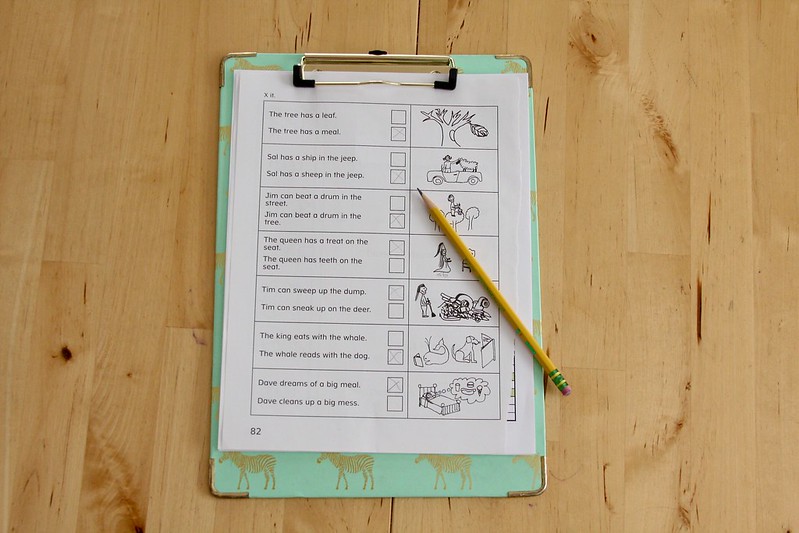
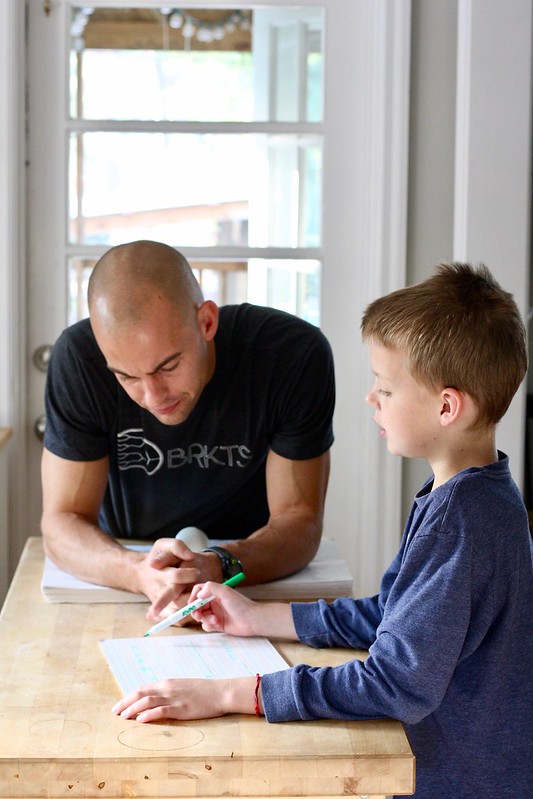

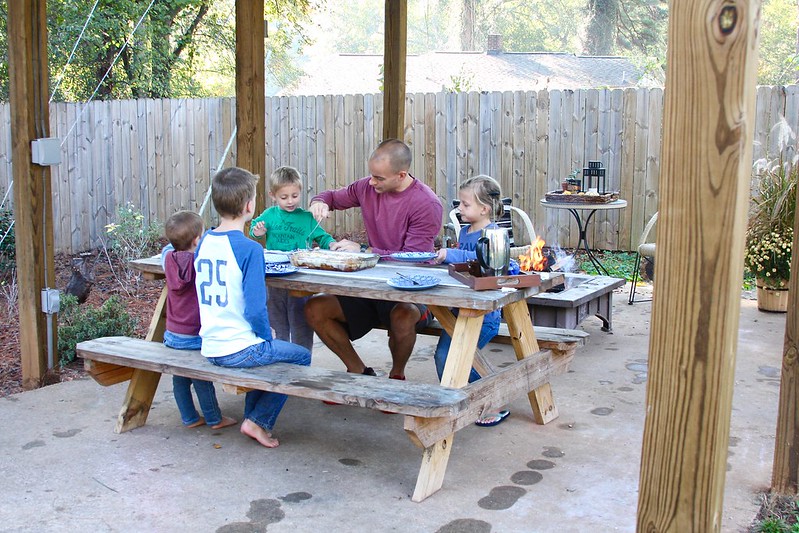
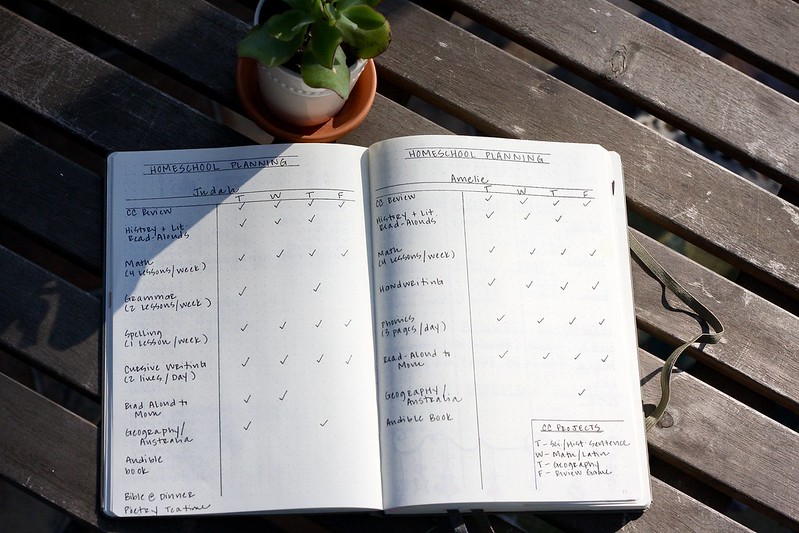
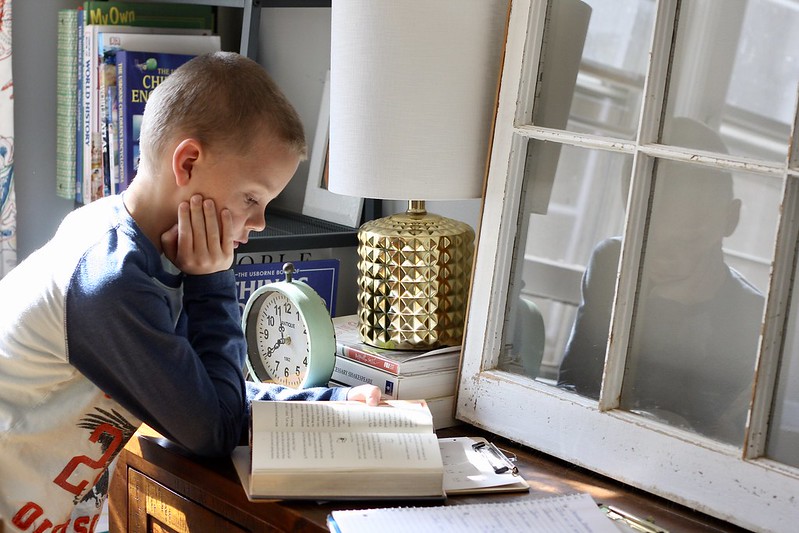
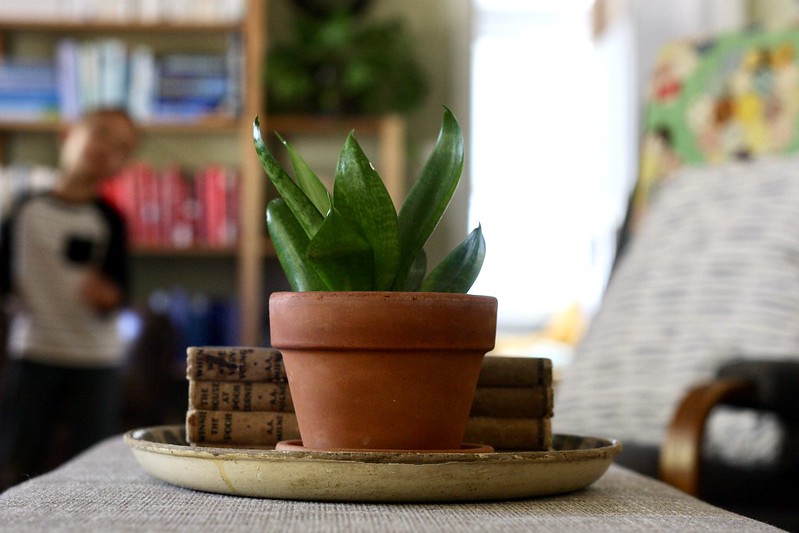
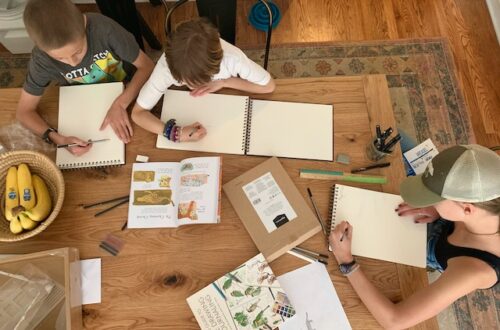
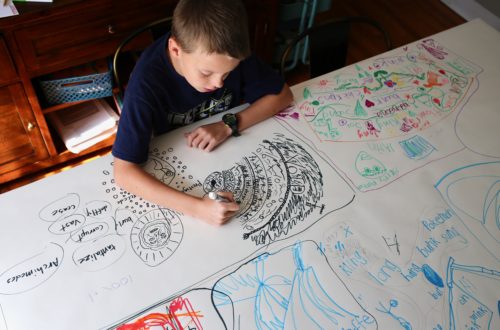
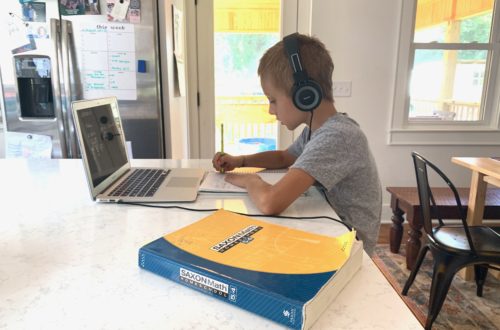
2 Comments
Sarah
Another great post. Appreciate your thoughts about working with the curriculum you have already committed to. I wrestled with the math we had chosen for Hud this year. Hard to know when it’s the curriculum, your child, or just normal school “boredom”.
julie gentino
I so agree! Give it until the end of this year, and if it’s still a daily struggle or he’s bored to tears, I’d ask around for some new ideas. Shari and I both switched from the math we chose that first year, with better results.